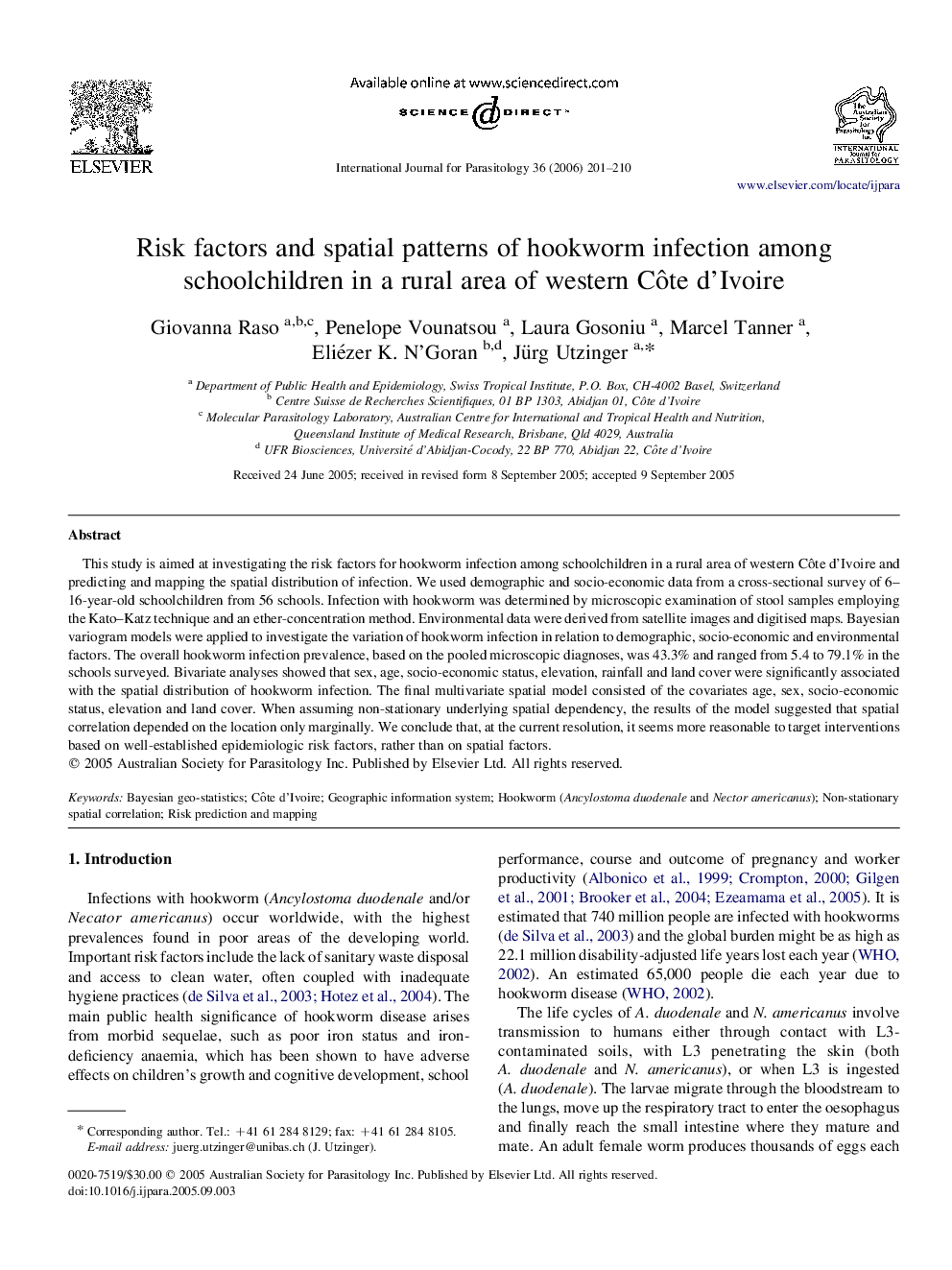| Article ID | Journal | Published Year | Pages | File Type |
|---|---|---|---|---|
| 2437042 | International Journal for Parasitology | 2006 | 10 Pages |
This study is aimed at investigating the risk factors for hookworm infection among schoolchildren in a rural area of western Côte d'Ivoire and predicting and mapping the spatial distribution of infection. We used demographic and socio-economic data from a cross-sectional survey of 6–16-year-old schoolchildren from 56 schools. Infection with hookworm was determined by microscopic examination of stool samples employing the Kato–Katz technique and an ether-concentration method. Environmental data were derived from satellite images and digitised maps. Bayesian variogram models were applied to investigate the variation of hookworm infection in relation to demographic, socio-economic and environmental factors. The overall hookworm infection prevalence, based on the pooled microscopic diagnoses, was 43.3% and ranged from 5.4 to 79.1% in the schools surveyed. Bivariate analyses showed that sex, age, socio-economic status, elevation, rainfall and land cover were significantly associated with the spatial distribution of hookworm infection. The final multivariate spatial model consisted of the covariates age, sex, socio-economic status, elevation and land cover. When assuming non-stationary underlying spatial dependency, the results of the model suggested that spatial correlation depended on the location only marginally. We conclude that, at the current resolution, it seems more reasonable to target interventions based on well-established epidemiologic risk factors, rather than on spatial factors.
